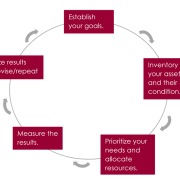Could infrastructure asset management improve your municipal bond performance?

If you’re a frequent reader of our newsletter and postings, you know we believe strongly in the benefits of infrastructure asset management. (This is a sampling of our prior articles about infrastructure asset management.) By regularly assessing the condition of your infrastructure and proactively planning its maintenance and replacement, you can reap many benefits. Most importantly, you will increase the useful life of your infrastructure for a lower long-term cost than the typical reactive approach many governments and authorities take.
A recent article in Governing magazine gives another good reason why investing in asset management can be beneficial: it just might lower your cost of borrowing through bonds. In this article, Justin Marlowe discusses the benefit of using the modified approach for calculating the value of infrastructure required in annual GASB reports. Under GASB standards, governments can either subtract a standard portion of their infrastructure’s value each year to account for depreciation (the traditional approach), or they can regularly assess the condition of the infrastructure, invest in maintenance to keep it in good condition, and then report the amount of money they have invested in maintenance (the modified approach). Using the modified approach, the assets don’t have to depreciate in value like they would in the traditional approach.
Marlowe cites research he’s conducted that shows investors appear to prefer trading bonds from governments that use the modified approach:
“Governments that use the modified method trade at much narrower price ranges compared to bonds from governments that depreciate. In other words, when a government uses the modified approach, investors are much more likely to agree on how to price its bonds. For governments, this can ultimately translate into lower bond interest rates.”
(excerpted from “Selling Your Sewer’s Story – Financial statements can make the best case for public works investors”)
He goes on to state that very few governments at the state and local level actually use the modified approach, so with a lower supply, the demand for such investments would likely be stronger yet.
The truth is, you’re going to have to invest in maintenance and repair anyway. At HRG, we believe that, if you invest in an asset management program, you can take a proactive approach to determining what maintenance is needed and then plan and budget for it in advance. This means you can target your maintenance dollars where they’re needed most and make sure you have the funds available to do the work before infrastructure failure brings even greater costs to bear on your budget.
Justin Marlowe’s study adds a bonus benefit to this type of approach: you can cite those proactive investments in your financial statements to make your government bonds a more attractive investment to traders.
Every client need is different, and HRG would be happy to discuss asset management planning, capital improvement planning, budgeting and/or rate making options to fit the unique needs of your community. Contact us to discuss your community’s infrastructure and financial goals today: (717) 564-1121!
 Adrienne Vicari, P.E., is the financial services practice area leader at Herbert, Rowland & Grubic, Inc., a civil engineering firm that serves local governments and authorities in Pennsylvania, Ohio, and West Virginia. Ms. Vicari has assisted numerous municipalities and water and sewer authorities with the creation of asset management programs that have created increased value and lowered costs for her clients.
Adrienne Vicari, P.E., is the financial services practice area leader at Herbert, Rowland & Grubic, Inc., a civil engineering firm that serves local governments and authorities in Pennsylvania, Ohio, and West Virginia. Ms. Vicari has assisted numerous municipalities and water and sewer authorities with the creation of asset management programs that have created increased value and lowered costs for her clients.







